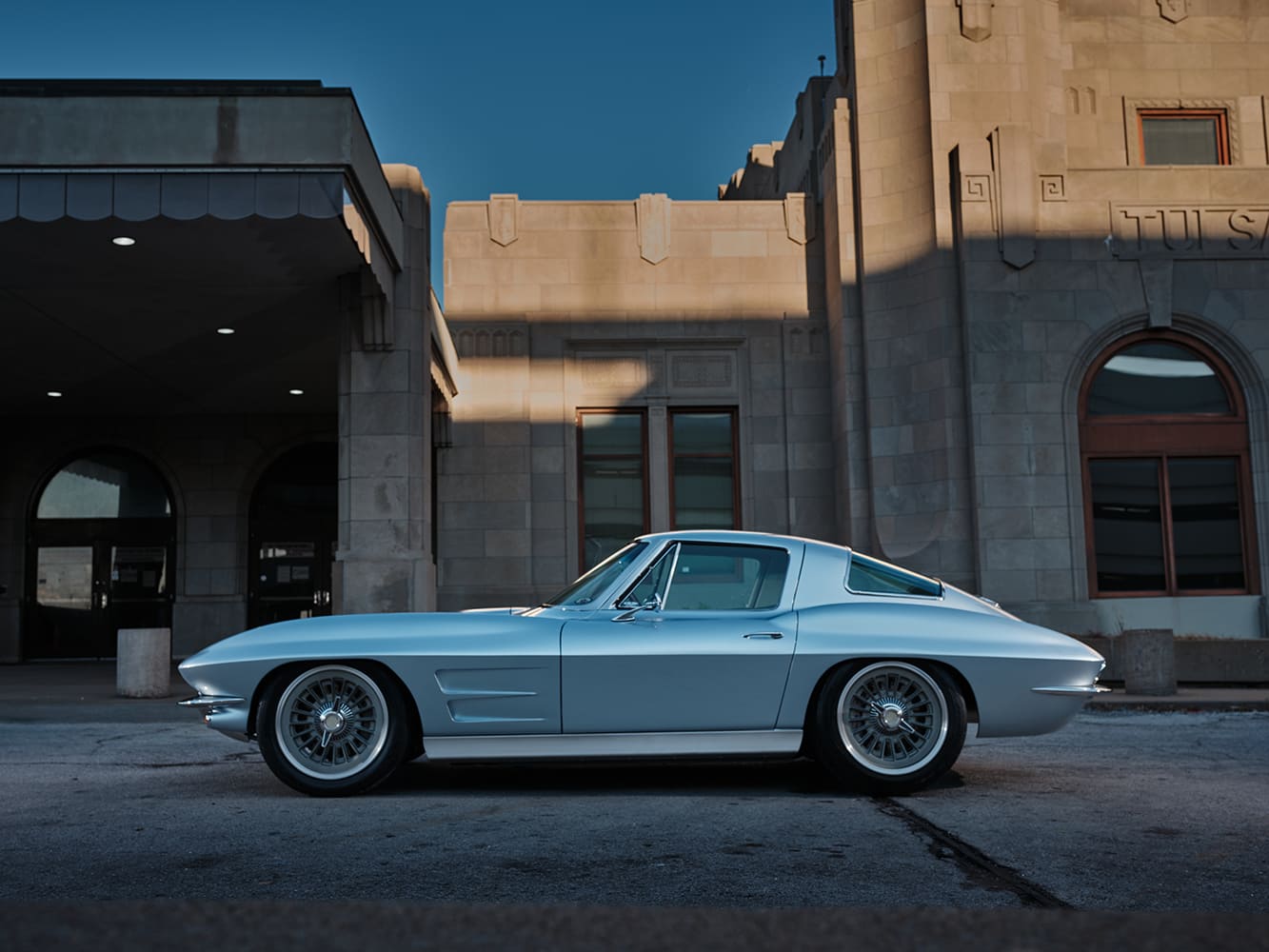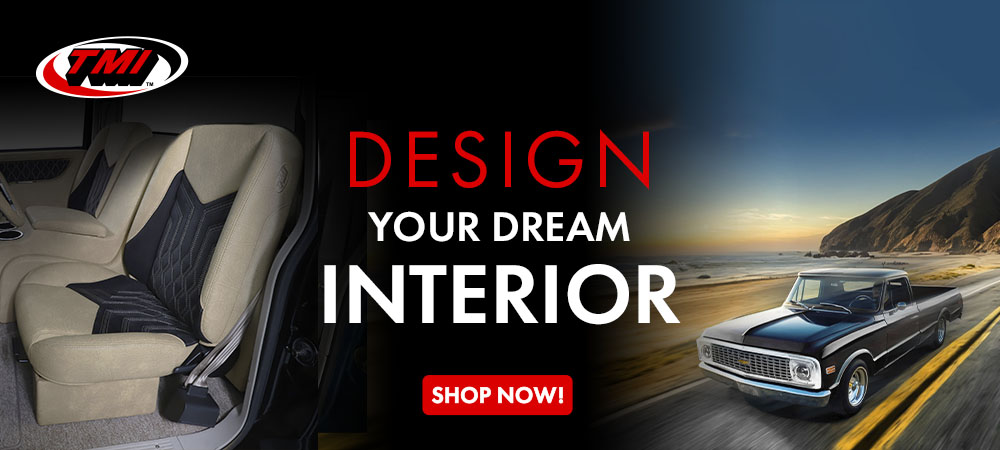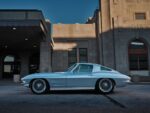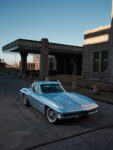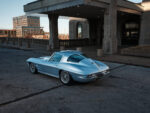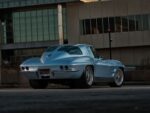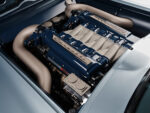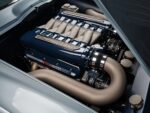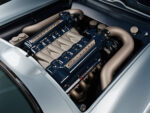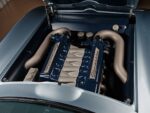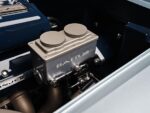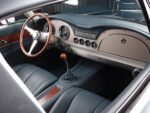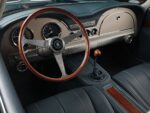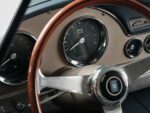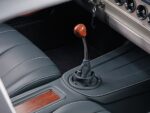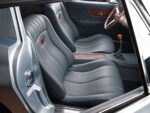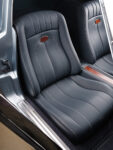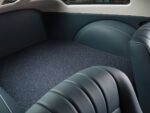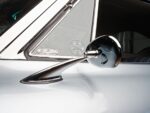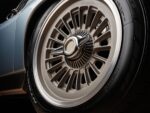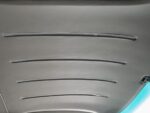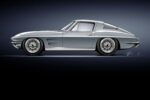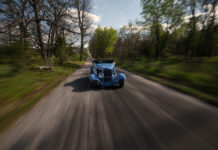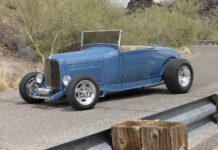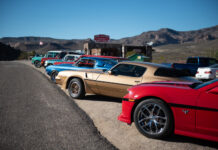By Brian Brennan – Photography By NotStock Photography – Illustration By e. Black Design Co.
It’s often repeated: Corvettes are factory hot rods and will forever hold a place in automotive history. This is remarkably accurate for the 1963 Corvette coupe, famously known as the “split-window.” Casey Shires, from Texas, and his father have been longtime Corvette enthusiasts, with a special fondness for the 1963 split-window, a unique, one-year-only design. However, while maintaining its classic aesthetics, the split-window needed to incorporate modern performance and personal features to fulfill Casey’s dreams.
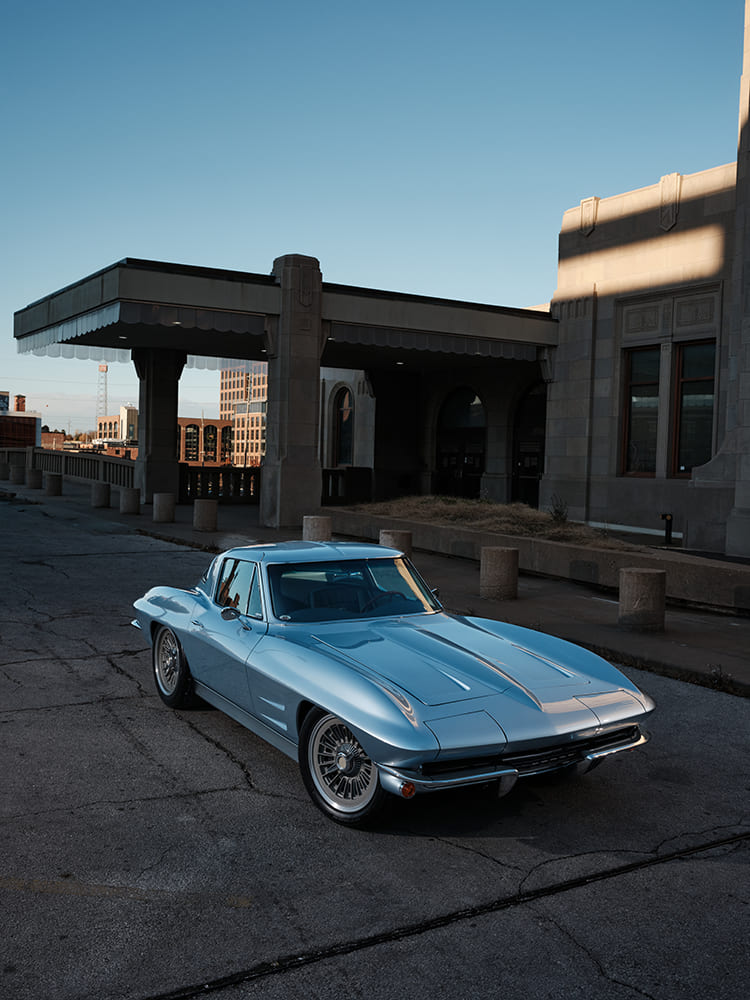
The Corvette, an older restoration, originally came into Casey’s hands through a friend. Over time and happenstance, Casey brought the split-window to Jason Smith of Hot Rod Garage (HRG) in Sand Springs, Oklahoma. Casey spoke with Smith and decided to let Smith and the staff at HRG “go for it.” Smith enlisted the help of Eric Black from eBDCo. From here, ideas were developed based on the concept that the Corvette would have a European “flavor,” as if it were built for the European market. Inspiration was drawn from Ferrari, Jaguar, and the Mercedes gullwing–more on Ferrari when we discuss the color.
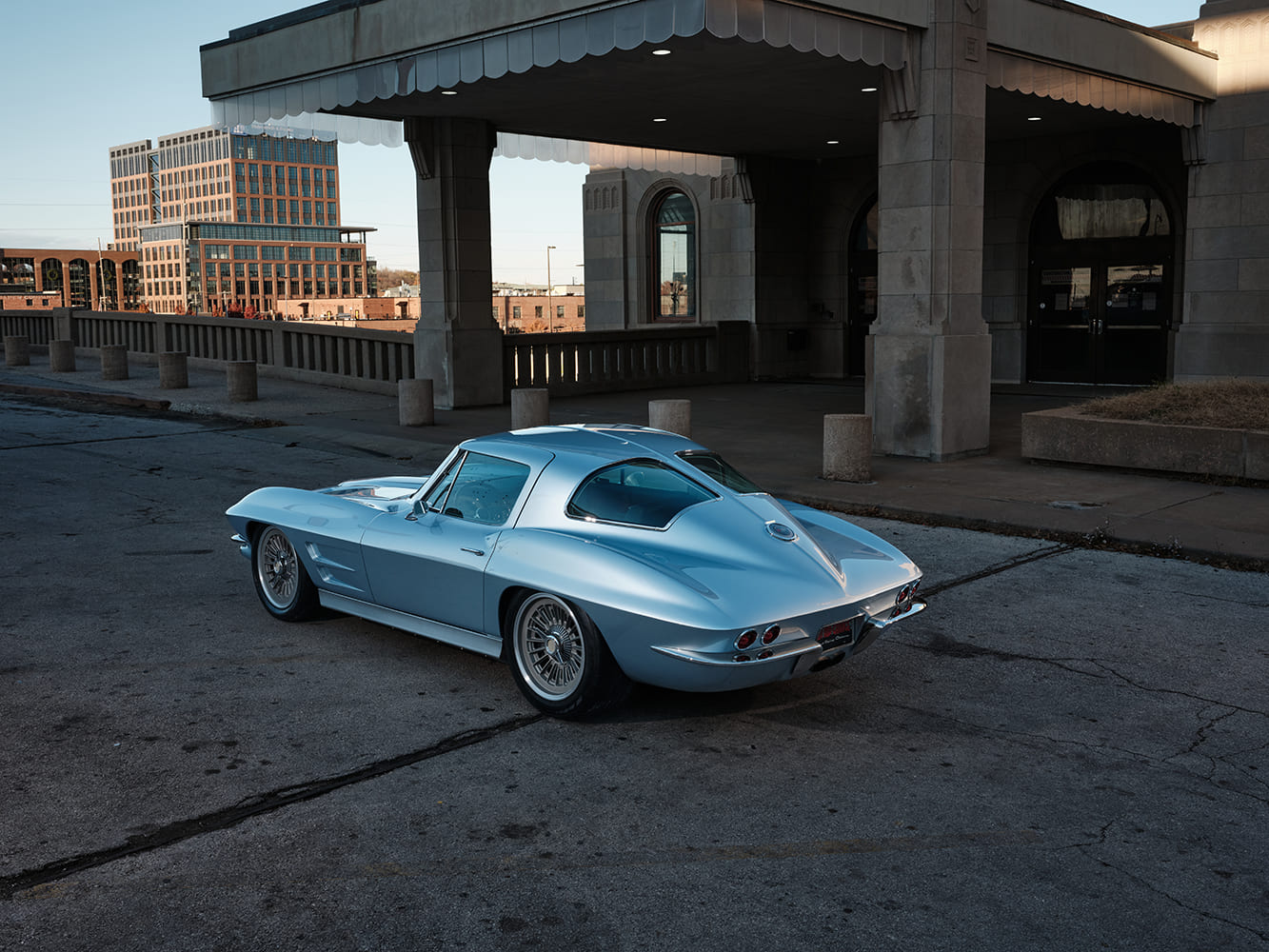
Originally crafted from fiberglass, the split-window body has undergone several subtle-yet-impactful changes. When altering an iconic design, it’s crucial to remember to “know when to stop.” Credit goes to Smith and Black for knowing when to “stop.” The 1963 Corvette coupe has experienced modifications to the front side quarter-panel scoops, the removal of the B-pillar vents, and a filled cowl.
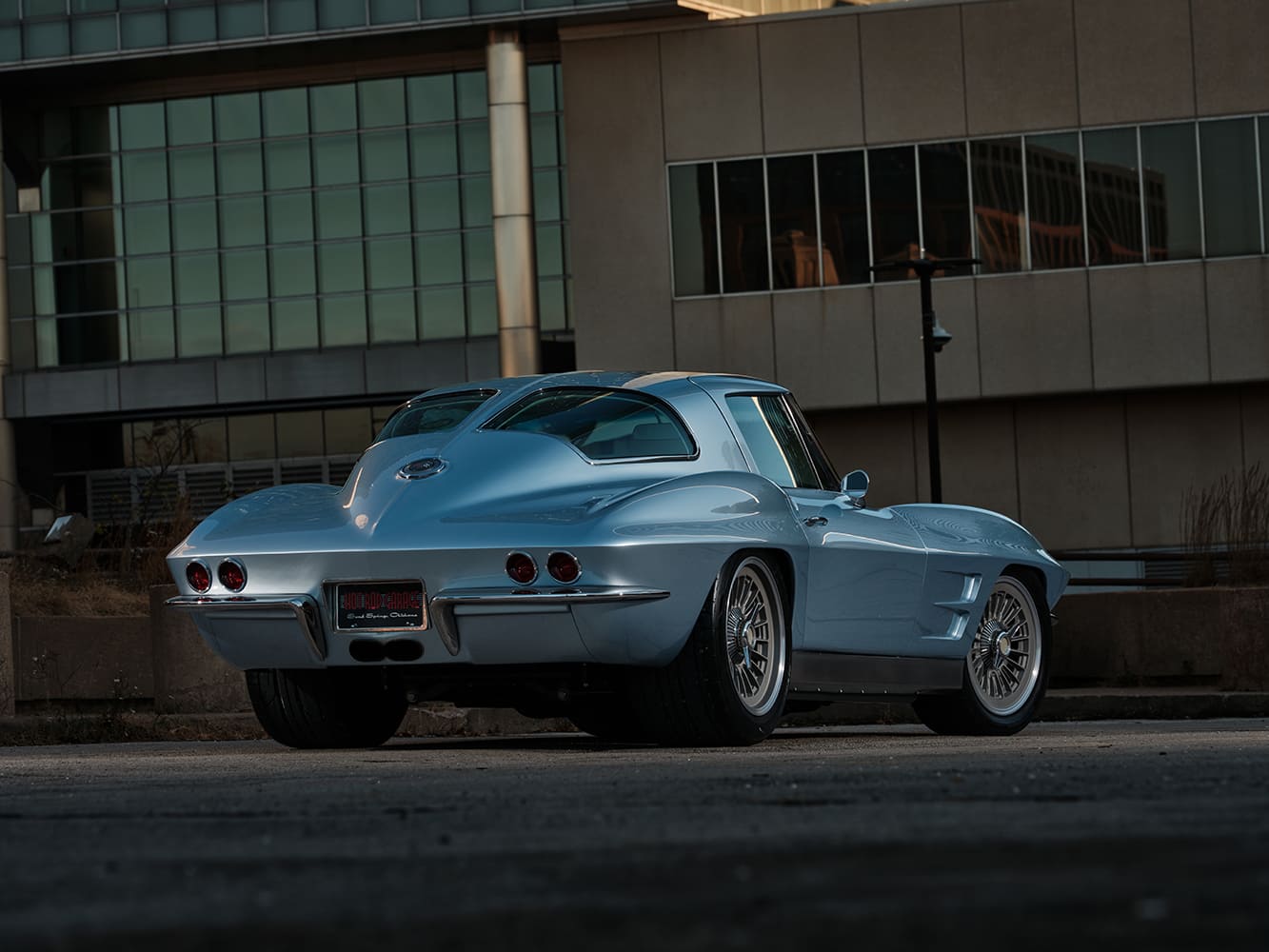
Next, Jaguar door handles, Porsche 356 side mirrors, and custom-built 16-gauge stainless steel rockers find their new place. While maintaining their original appearance, the front and rear bumpers have been thinned and now fit more snugly to the body. The hood was enhanced by removing the faux twin vents, improving its appearance, while custom hood hinges and latch mechanisms are now utilized.
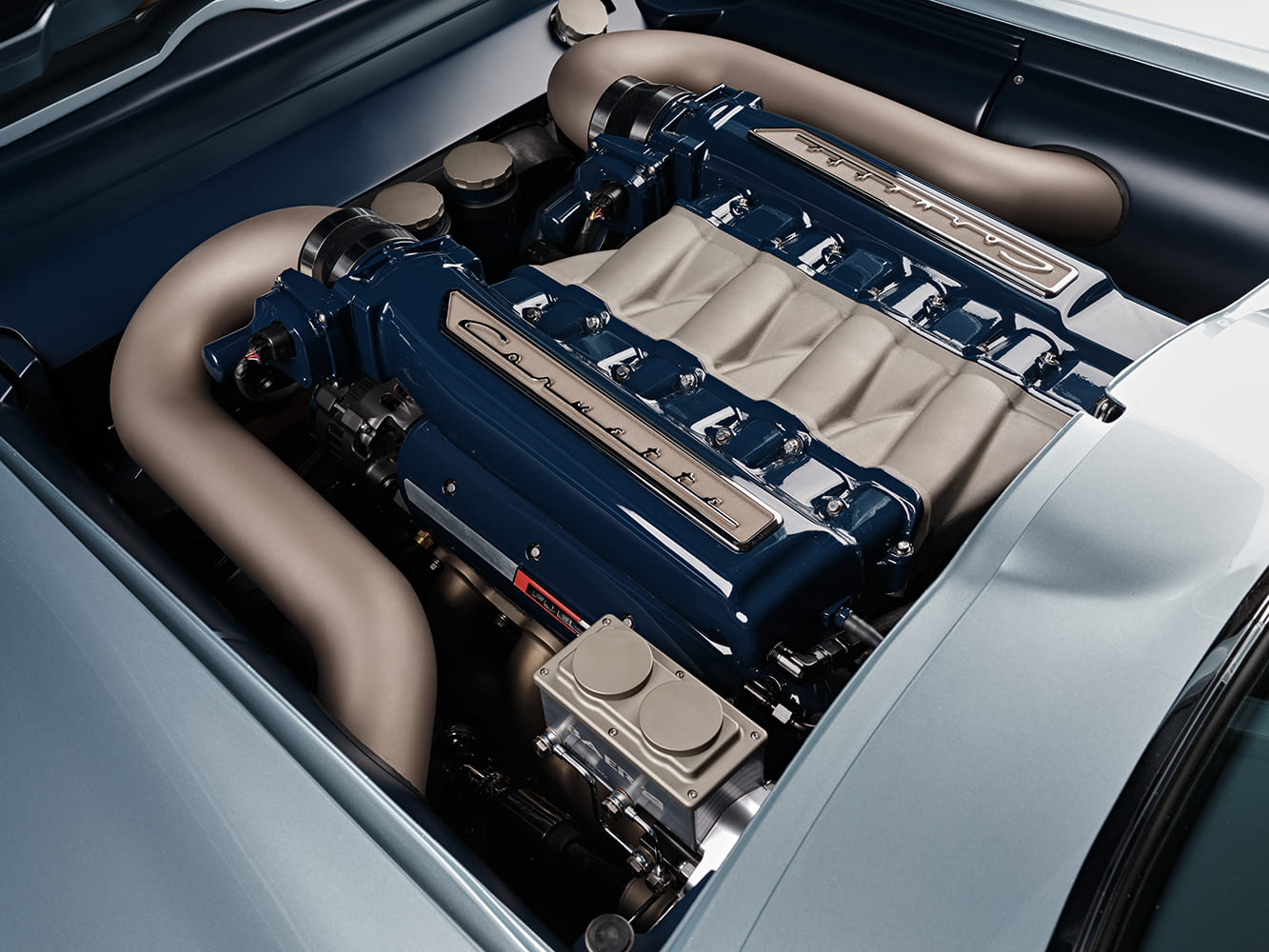
Beneath the leading edge of the modified hood lies a 1967 Corvette grille: initially subtle but a significant and noteworthy modification. HRG redid the rear wheeltubs and flooring. From this point, Kenny Small of HRG performed the necessary bodywork. Tom McDonald, also from HRG, applied the PPG two-stage basecoat/clearcoat in Ferrari Grigio Alloy Metallic (paint code 750). Grigio Alloy is a very light gray with distinct blue undertones. It can appear pale blue in certain lighting, particularly when the sun hits it. It’s often described as a silver metallic with a light blue undertone, creating a unique mix of gray and blue. Corvettes, particularly this one, showcase minimal brightwork, but Jon Wright’s CustomChrome Plating expertly crafts the existing elements.
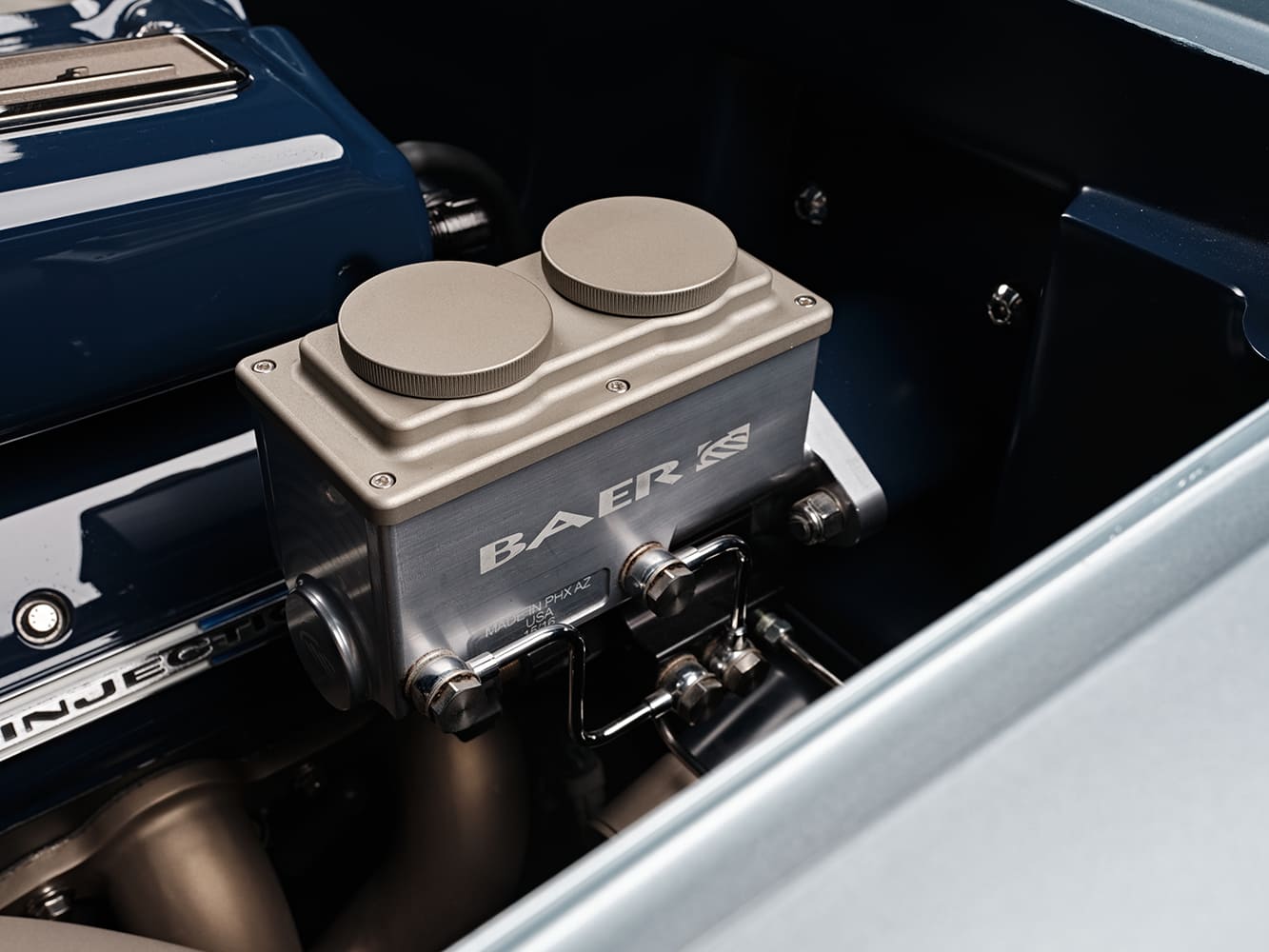
A quick look inside won’t do justice to the extent of the interior modifications. Although changed, the interior still maintains the classic C2 Corvette appearance. The dashboard is a custom-built piece by Casey Bieth, made from aluminum and stainless steel, now featuring a tailor-made variation of the Dakota Digital HDX-2024 gauges. The billet aluminum housings have been chrome-plated after being sized to fit aftermarket openings measuring 4-5/8 inches and 2-1/16 inches in diameter. The instruments drop in from the front of the dash; the front bezel’s outer diameter measures 5 inches for the speedometer and tachometer and 2-5/16 inches for the smaller gauges, all requiring approximately 2-1/4 inches of depth.
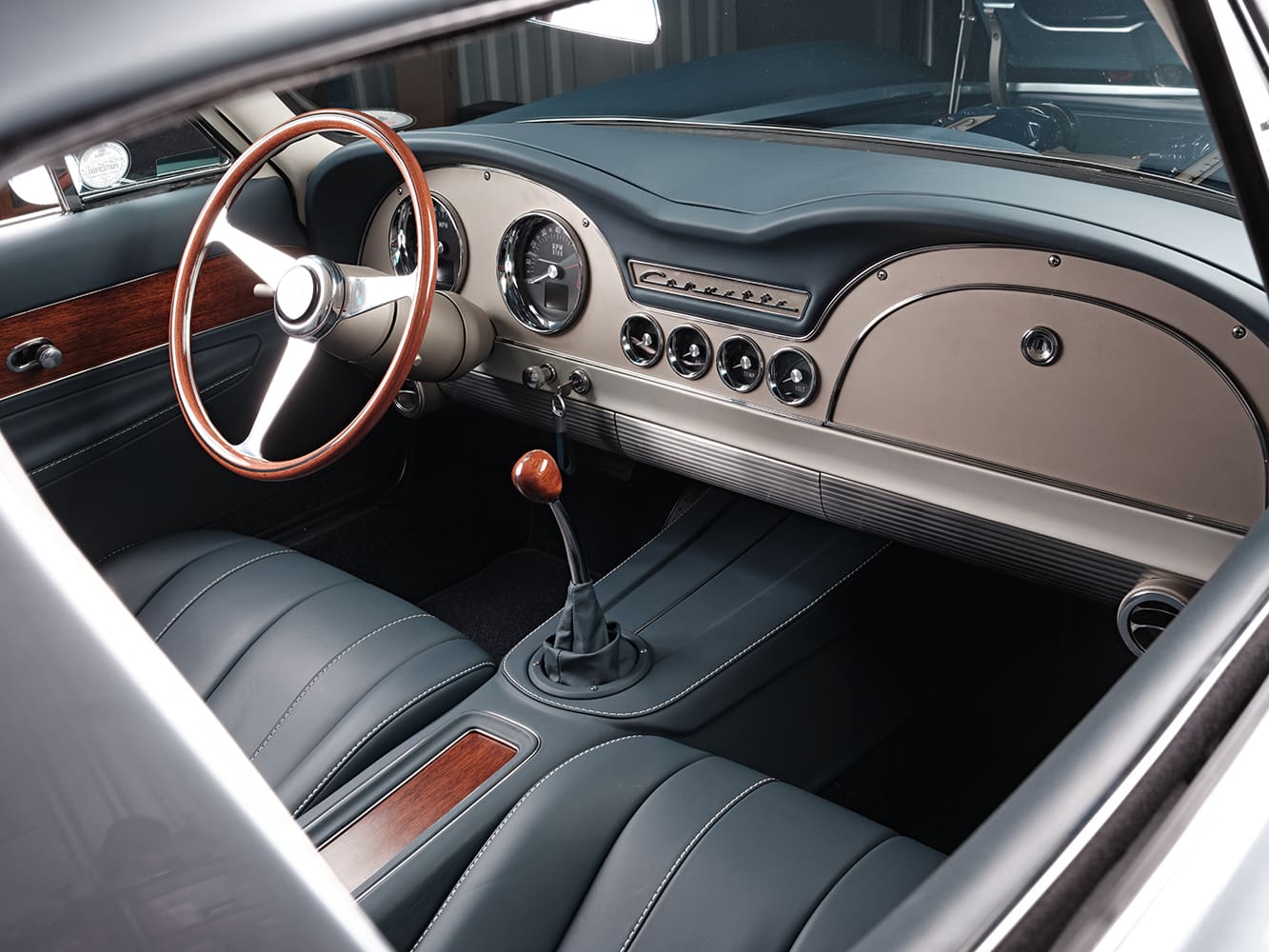
Other interior features include the Ididit tilt steering column, a Nardi three-spoke sporty wheel, and a Vintage Air A/C system. The necessary wiring is based on an American Autowire system that HRG’s own Gene Anderson installed. The custom front bucket seats were made by Chuck Rowland, who also managed the upholstery featuring Navy Blue leather on the seats, doors, and kick panels. The carpeting is made of blue German wool. The headliner is a unique one-piece fiberglass shell covered in cream-colored leather, complete with custom LED light strips.
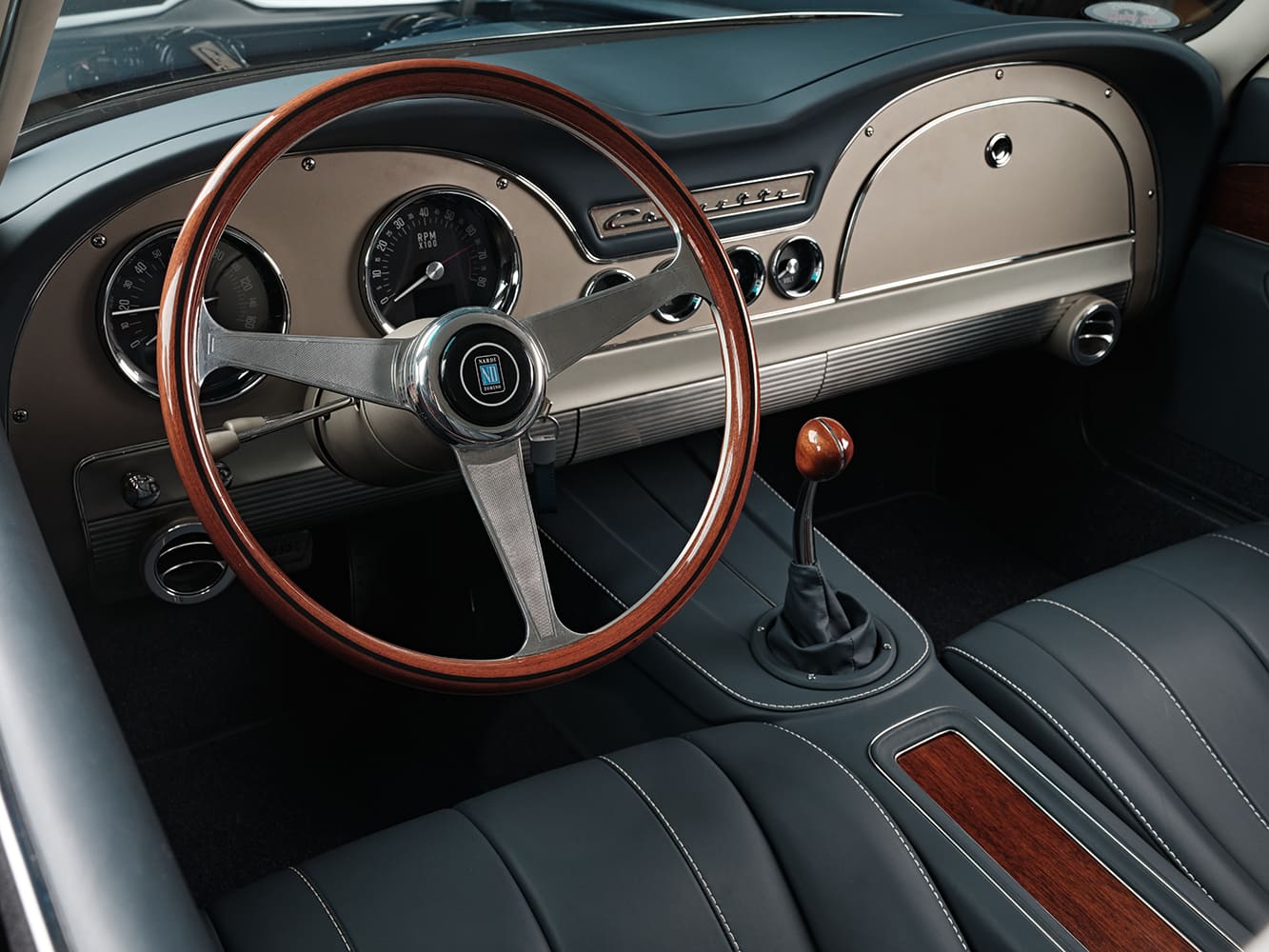
This 1963 Corvette, designed with a European flair, is built on a Roadster Shop chassis inspired by their Fast Track series, featuring independent rear suspension. The front suspension from Roadster Shop utilizes Corvette C7 front spindles, Fox coilover shocks, a 1-1/4-inch sway bar, and a power rack-and-pinion steering system. The IRS (centersection is based on a Ford 9-inch) sits in the rear, again equipped with a Fox coilover shock system and a 1-1/8-inch sway bar.
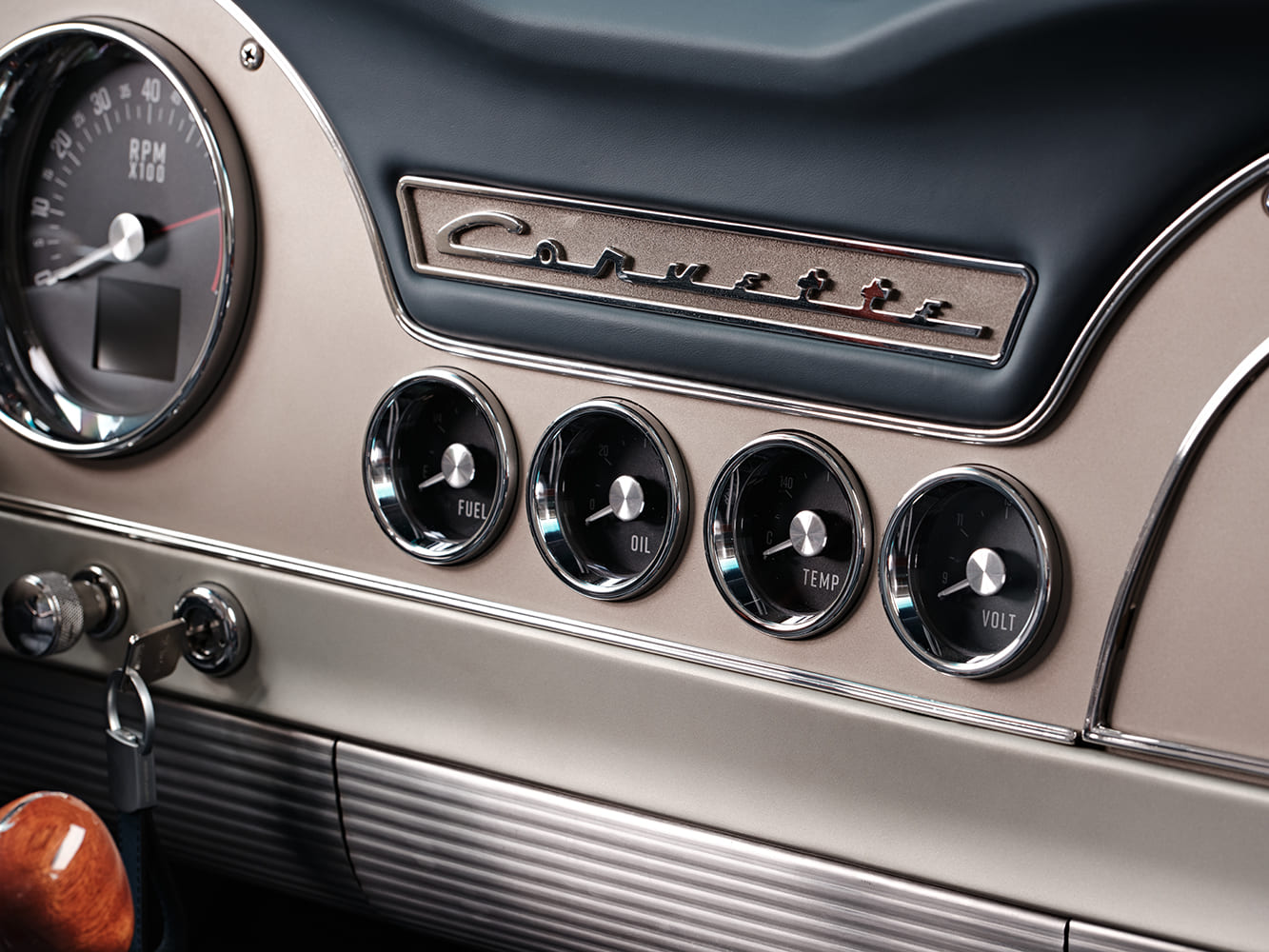
The braking system is based on a Baer master cylinder, paired with Corvette factory pedals that channel stopping power to the 14-inch drilled-and-slotted rotors with six-piston calipers at both the front and the rear.
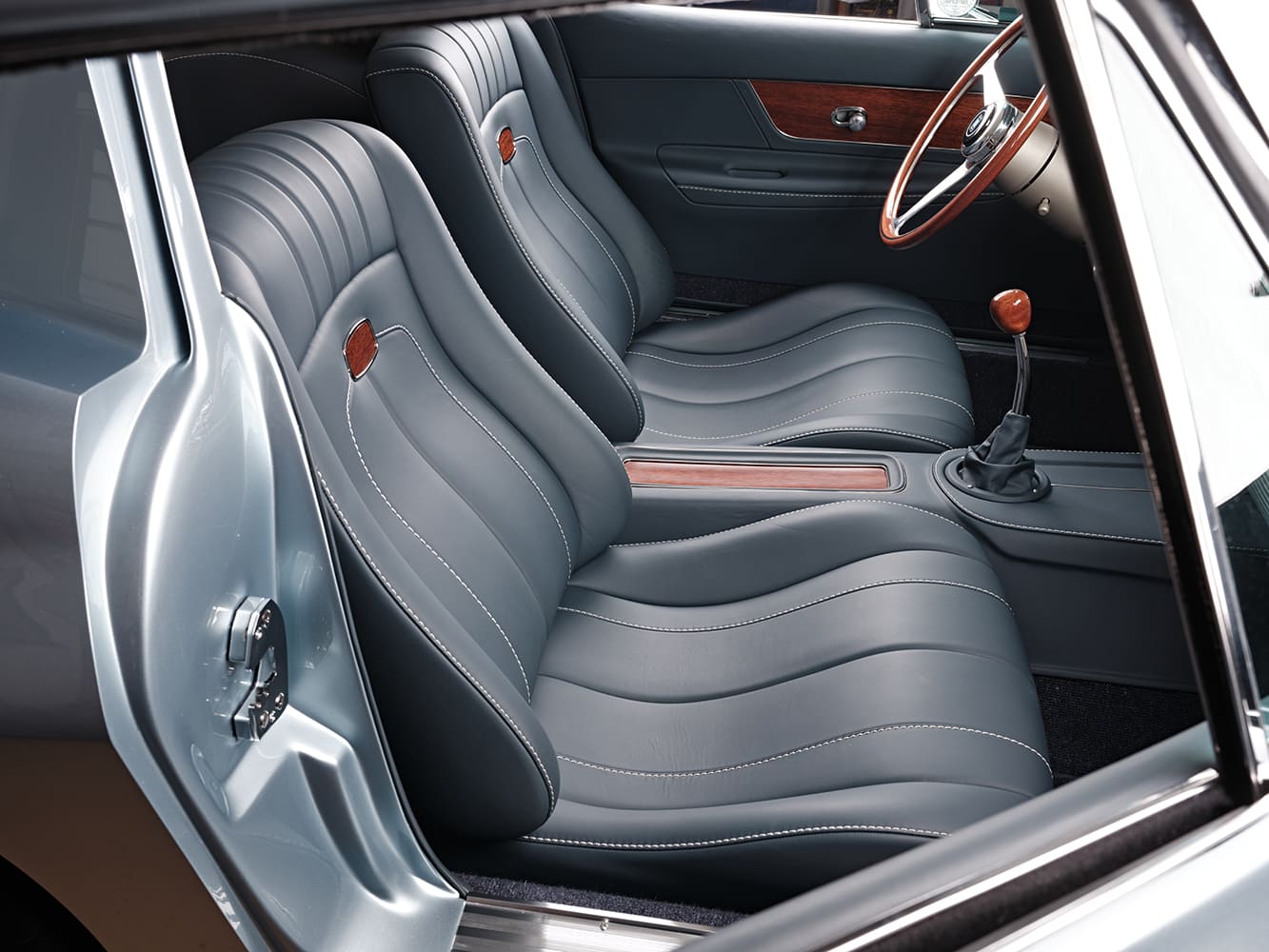
The 555G2 features ample Nitto rubber at the corners, measuring 245/40R18 in the front and 315/40R18 in the rear. Black and Smith collaborated once more to design the one-off wheels manufactured by TJ at Atomic Machine. Although the wheels have an early Corvette knock-off appearance, they also possess a distinctly modern look. (Kelsey Hayes supplied the original and authentic ribbed, knockoff 15×6 aluminum wheels. By 1967, the knock-off spinner was banned by federal mandate, so the aluminum wheels were bolted on with a center cap instead of a spinner.)
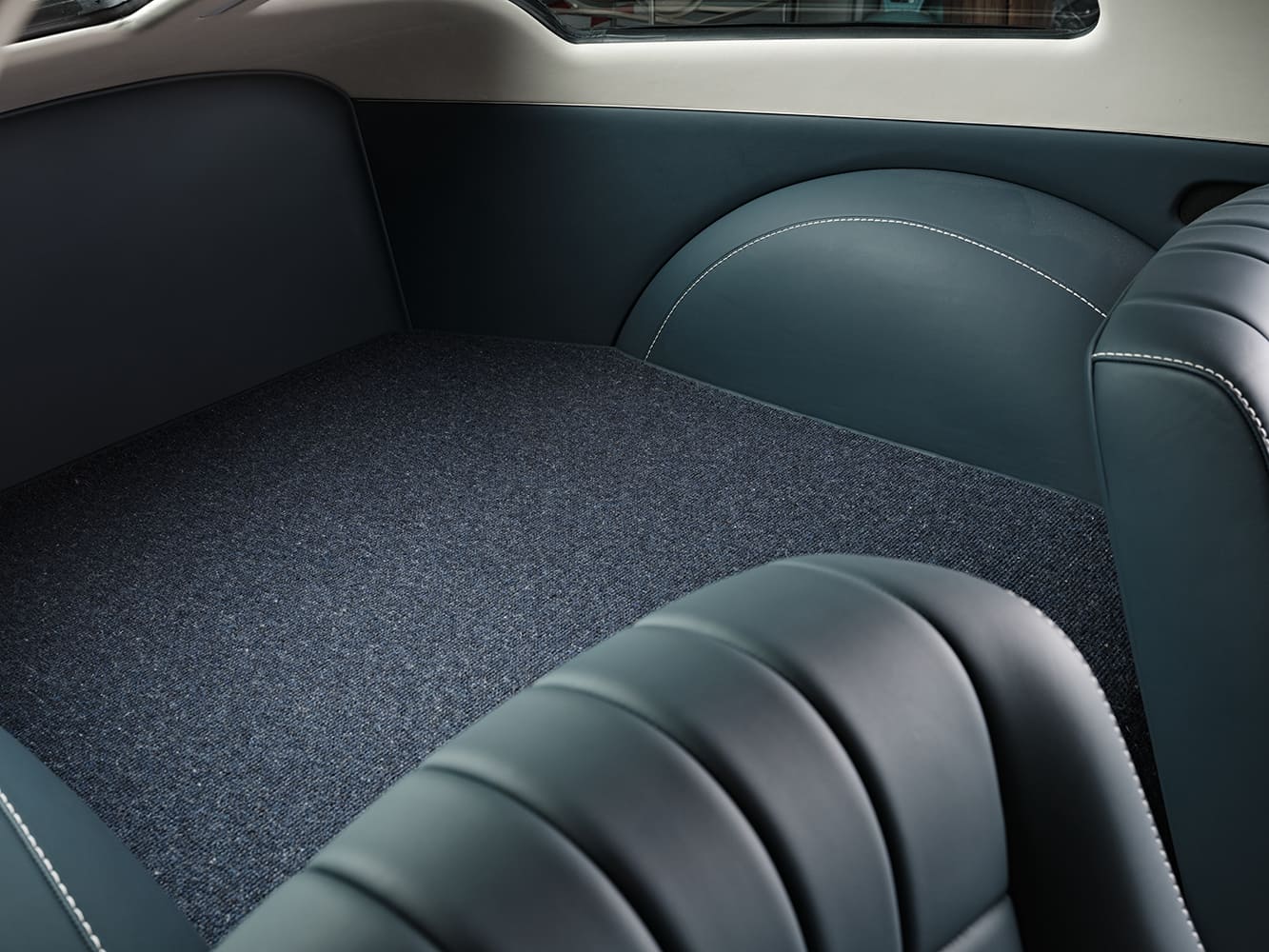
A Corvette wouldn’t be a Corvette without plenty of power—and this one delivers with over 620 hp and 605 lb-ft of torque. All this power comes from the Don Hardy Race Cars–built iron block LS7 (427 ci), which features a custom cam grind, DART aluminum heads secured by ARP hardware, and Don Hardy valve covers enhanced with a custom paint scheme by HRG. An Edelbrock EFI Cross-Ram intake is equipped with dual throttle bodies. It’s controlled by Holley Dominator EFI electronics and an HRG custom air tube system fitted with twin hidden filters.
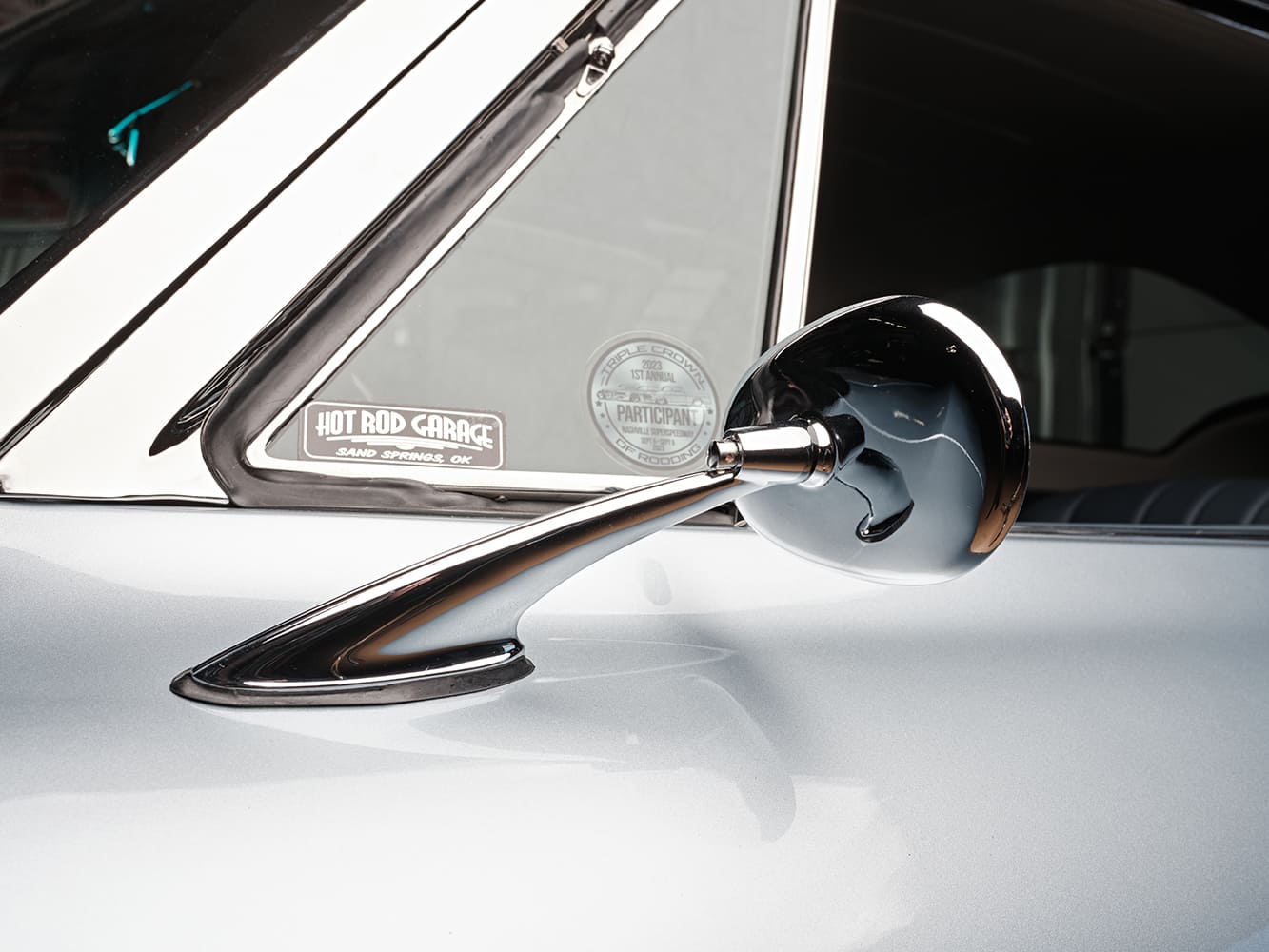
A Walbro 450 electric in-tank fuel pump (Ricks Tanks fuel tank) provides the necessary fuel. This high-pressure pump flows 450 liters per hour at a base pressure of 50 psi. The coil packs are LS, while the plug wires are MSD. The spent gases exit through a pair of Speedway Motors Tru-Ram manifolds designed for the LS-based block, working in unison with a 3-inch stainless steel–fabricated exhaust system by Charlie Watson of HRG.
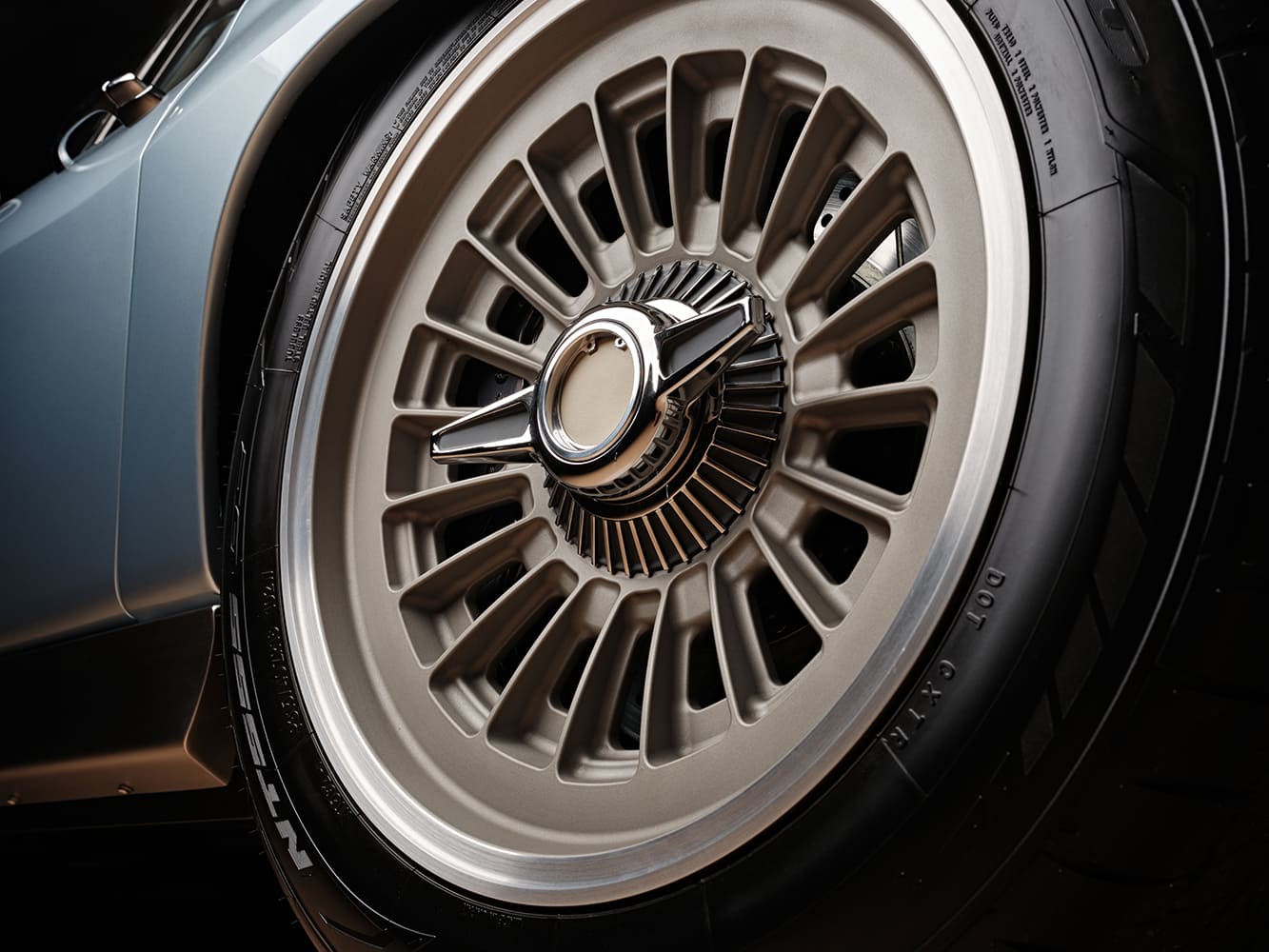
The system is wrapped in DEI exhaust wrap, and the pair of mufflers are sourced from Stainless Works, featuring turbo-chambered stainless steel construction. Additional engine accessories include a PWR crossflow (dual pass) radiator, a pair of SPAL electric fans, a Billet Specialties Tru-Trac serpentine belt system paired with a Billet Specialties alternator, a Powermaster starter, and an Optima battery in its factory position.
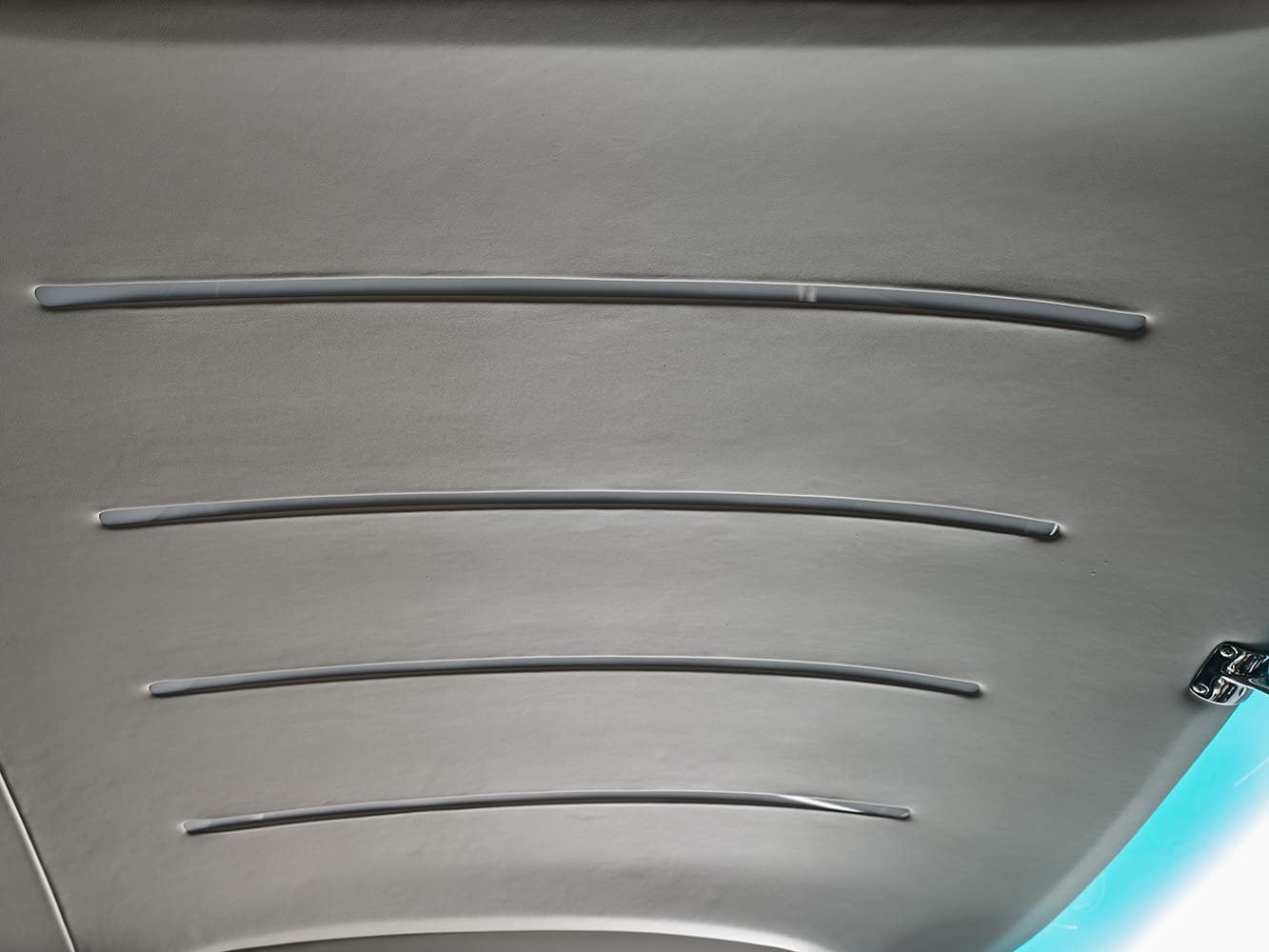
A Bowler Performance–prepped T-56 six-speed manual transmission is used along with a custom-made shifter and knob from HRG, while the clutch package (clutch disc, pressure plate, flywheel) comes from McLeod.
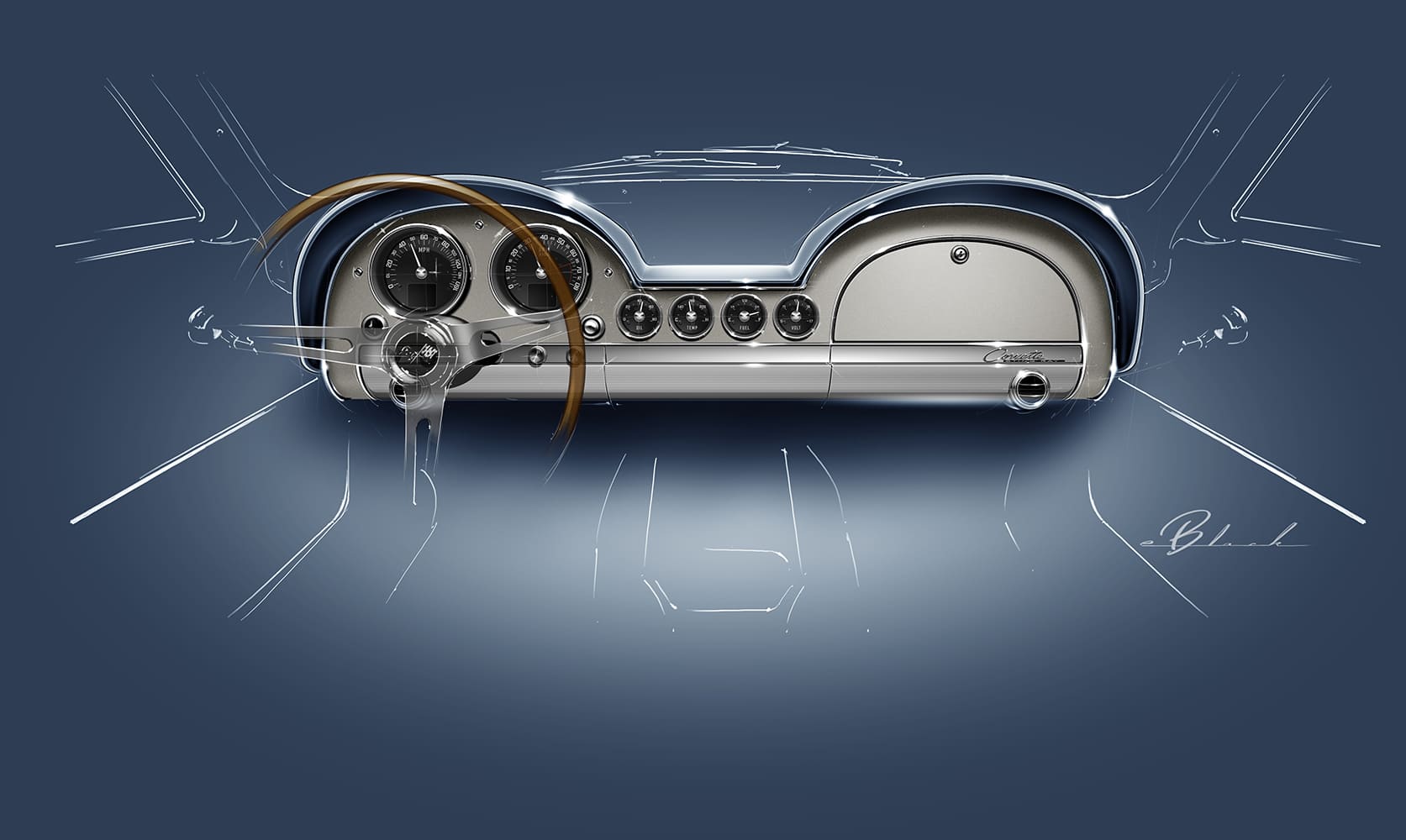
If you were out and about over the past few summers, you may have spotted this stunning 1963 Corvette split-window, which took home a truckload of awards. The split-window was a Top Five finalist for Columbus’ 2023 PPG Street Machine of the Year. It also achieved a Top Five finalist position for the 2023 BASF America’s Most Beautiful award in Fort Worth (this award was renamed the BASF Goodguys Most Bitchin’ in 2024).
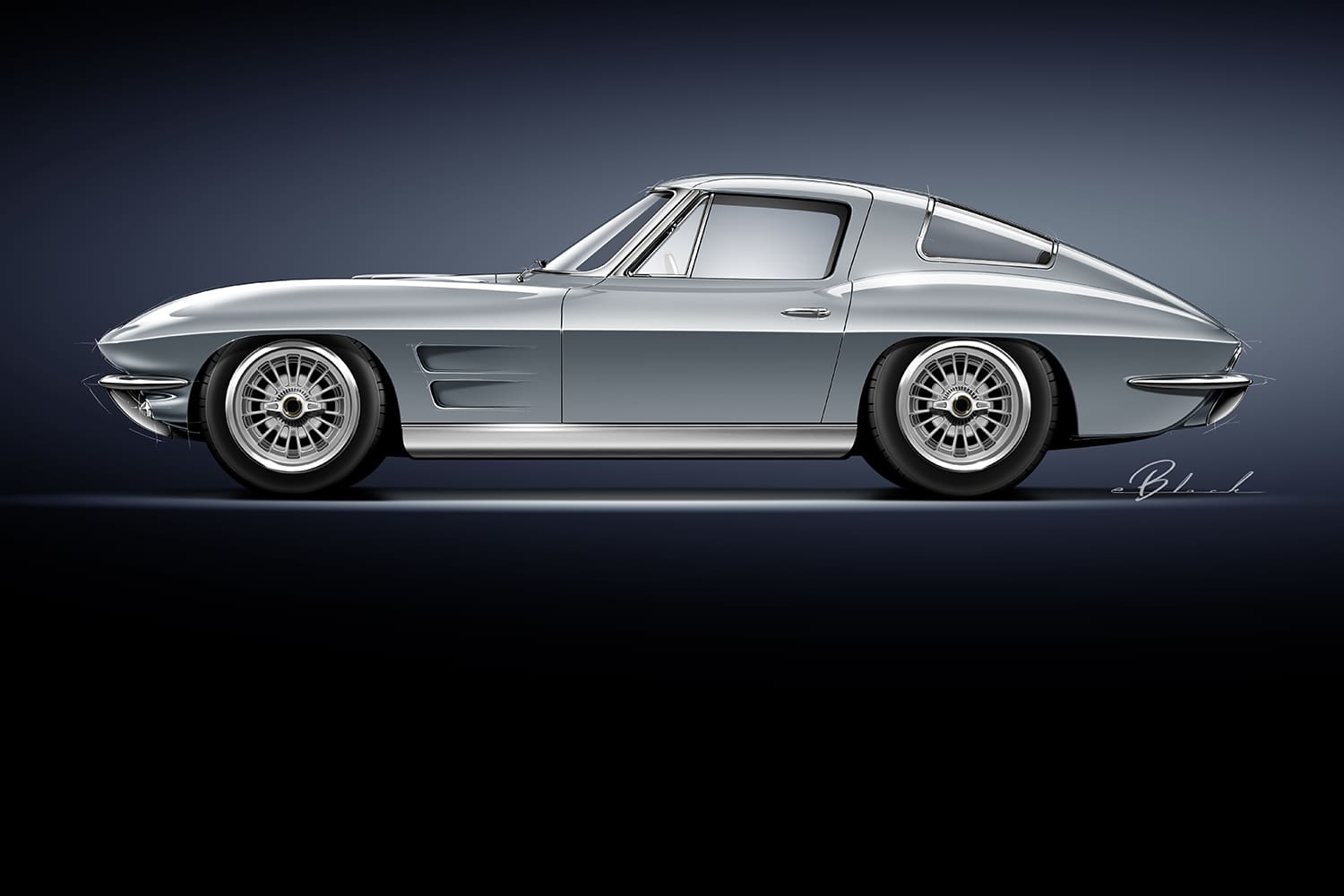
Additionally, the car earned HRG the Goodguys 2023 Chevrolet Performance GM Iron Builder of the Year award. Moreover, it has earned a Chip Foose Design Award, a Big Oak Garage Pick, and a CPP Top 10 Triple Crown of Rodding award. Many appreciate how this iconic Corvette design was treated during its transformation; “know when to stop.” MR
Check out this story in our digital edition here.











